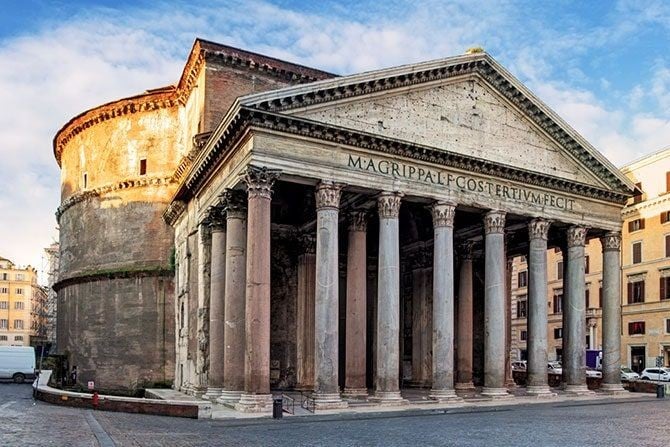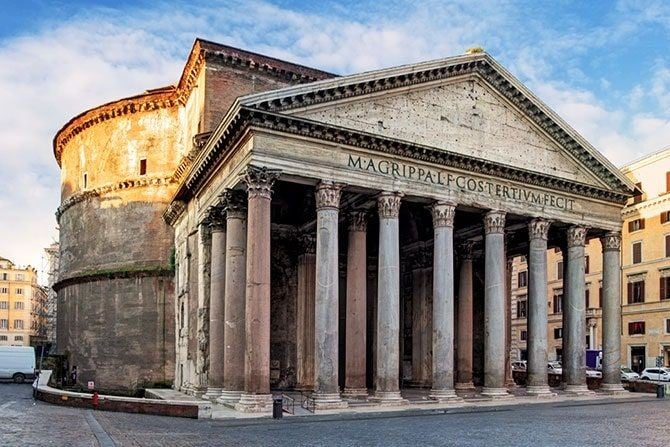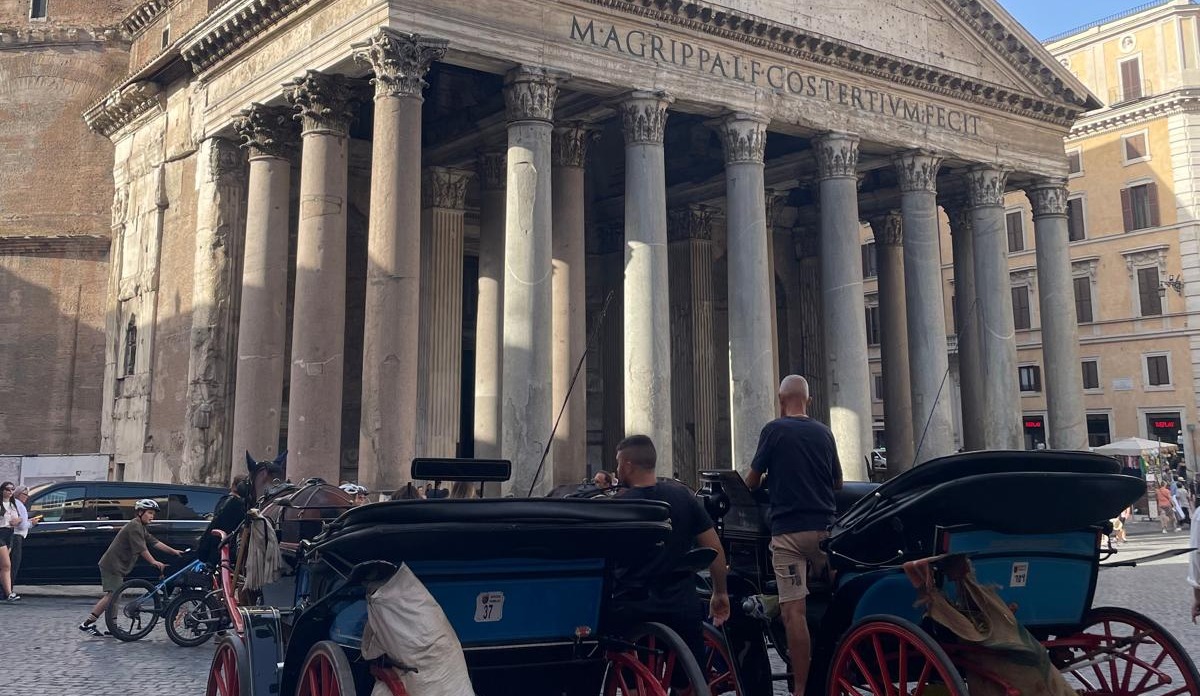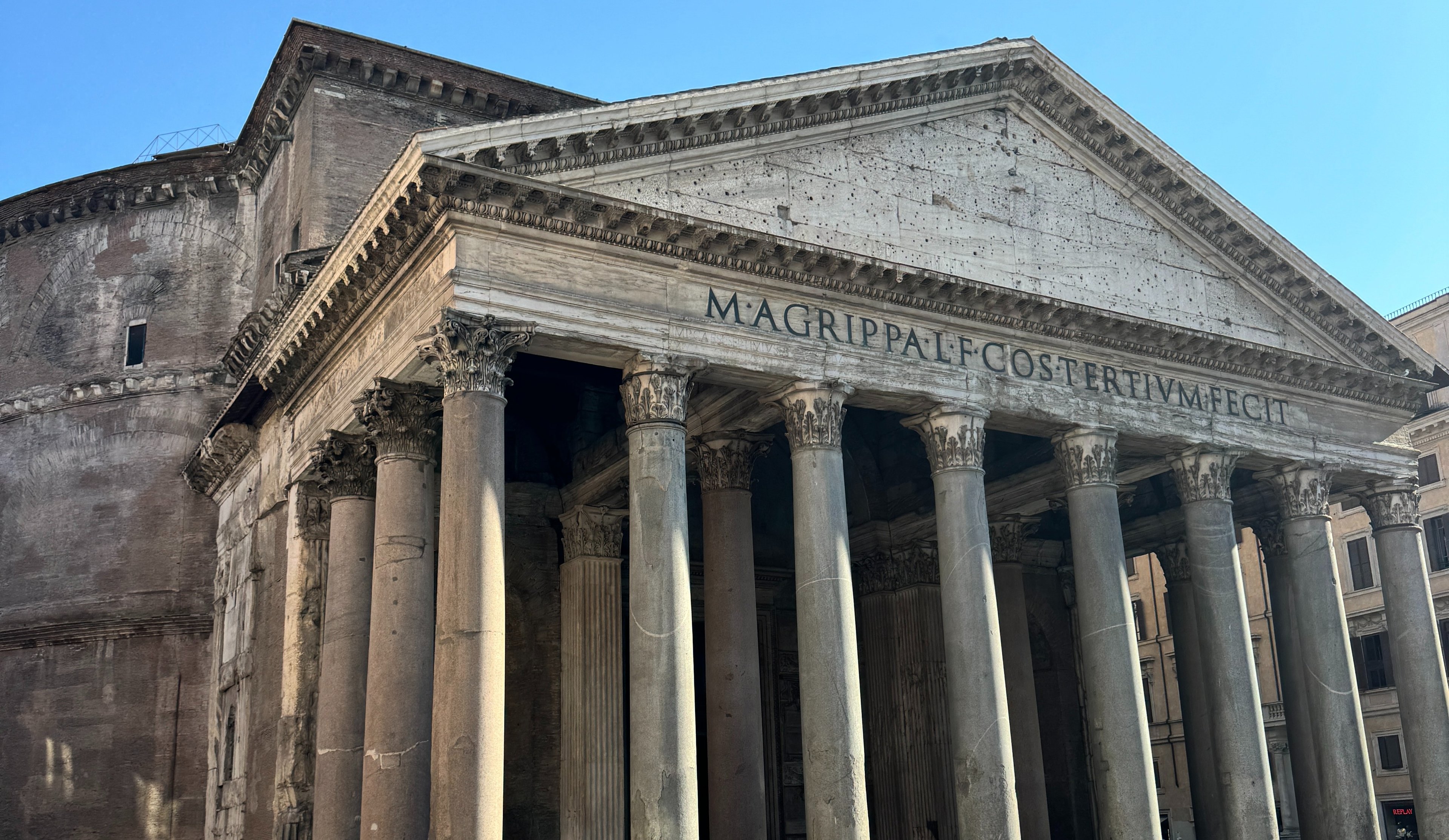Pantheon





Ask ThatchGPT
Suggest a local expert to plan my trip
Suggest an unique itinerary for my Italy trip
What foods do Italy locals eat
What are some true hidden gems in Italy
Help me brainstorm trip ideas for Italy
Help me plan a family-friendly trip to Italy
What people say
Alex Ayling
Available for hire
"The Pantheon is a magnificent ancient Roman temple located in Rome, Italy. It is one of the best-preserved and most iconic structures from the Roman Empire. Built between 118 and 125 AD during the reign of Emperor Hadrian, the Pantheon is renowned for its architectural grandeur, historical significance, and spiritual ambiance.
The most striking feature of the Pantheon is its dome, which is the largest unreinforced concrete dome in the world. The dome's design is a marvel of engineering, with a perfect hemispherical shape and a central oculus, a circular opening at the top, which allows natural light to illuminate the interior. The dome symbolizes the heavens and provides a breathtaking sight for visitors.
Inside the Pantheon, the vast and open space creates a sense of awe. The circular interior is adorned with exquisite marble, statues, and decorative elements. The harmony of the design and the play of light from the oculus create a serene and spiritual atmosphere, adding to the mystical allure of the Pantheon.
One of the remarkable aspects of the Pantheon is its longevity and adaptability. Originally built as a temple dedicated to all the gods of Ancient Rome, it was later converted into a church, known as Santa Maria ad Martyres, in the 7th century. This transformation preserved the Pantheon and allowed it to survive through the centuries, even as many other ancient Roman structures fell into ruin.
Visiting the Pantheon offers a unique opportunity to witness the architectural brilliance of the Roman Empire and experience a connection to ancient history. It serves as a testament to the ingenuity and craftsmanship of the Romans, and its awe-inspiring beauty continues to captivate visitors from around the world.
Additionally, the Pantheon's central location in Rome makes it easily accessible and conveniently situated near other notable landmarks. It is surrounded by charming streets, piazzas, and cafes, providing visitors with a chance to explore the vibrant atmosphere of the city while appreciating the historical significance of the Pantheon.
In summary, the Pantheon is worth visiting due to its architectural splendor, historical importance, and the sense of wonder it evokes. It stands as a testament to the genius of ancient Roman engineering and offers a profound connection to the past, making it a must-see attraction for anyone visiting Rome.
"
Read more in:
Pedro Pereira
Available for hire
"The Pantheon, also known as the Basilica di Santa Maria ad Martyres (Basilica of Saint Mary and the Martyrs), is a magnificent architectural marvel and historic landmark in Rome, Italy. Here's a comprehensive look at its rich history, architectural feats, and what makes it a must-visit site:
History:
Originally built as a temple in the early 2nd century AD by Roman Emperor Hadrian (reigned 117-138 AD), possibly on the site of an earlier temple dedicated to all gods (Pantheon in Greek).
The purpose of the Pantheon's construction is still debated by historians, with theories suggesting it was a temple to all gods, a celebration of Hadrian's deified family, or a tribute to the planets.
Converted into a Christian church dedicated to Saint Mary and the Martyrs in the 7th century, which has allowed for its remarkable preservation.
Architectural Wonders:
The Pantheon's most striking feature is its awe-inspiring dome.
With a diameter of nearly 43 meters (142 ft) and a height matching it, the dome remains the largest unreinforced concrete dome in the world.
The oculus, a circular opening at the dome's apex, is the only source of natural light within the Pantheon. This ingenious design not only illuminates the interior but also creates a unique and symbolic connection between the earthly realm and the heavens.
The rectangular pronaos (portico) features massive granite columns and bronze doors dating back to the Roman period.
The interior is a rotunda (circular building) with niches originally housing statues of Roman deities.
The walls are lined with colorful marble panels, and the coffered (decorated with sunken compartments) concrete ceiling adds to the grandeur.
Significance and Modern Use:
The Pantheon stands as a testament to the remarkable engineering and architectural skills of the Roman Empire.
It has influenced countless architects and artists throughout history and continues to inspire awe in visitors today.
The Pantheon serves as a functioning church and frequently hosts religious ceremonies.
It's also a popular tourist destination and a must-see for anyone visiting Rome.
Some famous names like the painter Raphael and the composer Arcangelo Corelli are buried here."
Read more in:
Linda Miller
"The Pantheon is a former Roman temple and, since 609 AD, a Catholic church (Basilica of Santa Maria ad Martyres or "Santa Maria Rotonda"). It was built on the site of an earlier temple commissioned by Marcus Agrippa during the reign of Augustus, then after that burnt down, the present building was ordered by the emperor Hadrian and probably dedicated c. 126 AD.
The Pantheon's large circular domed cella, with a conventional temple portico front, was unique in Roman architecture. Nevertheless, it became a standard exemplar when classical styles were revived, and has been copied many times by later architects.
The Pantheon is one of the best-preserved ancient buildings in Rome. It is still used as a church today, and it is also a popular tourist attraction.
Here are some interesting facts about the Pantheon:
--The Pantheon's dome is the largest unreinforced concrete dome in the world.
--The dome is made of a mixture of concrete and volcanic ash.
--The Pantheon's oculus is a 9-meter-wide opening in the center of the dome. It is the only source of natural light in the building.
--The Pantheon's floor is decorated with a geometric pattern made of marble and granite.
--The Pantheon's interior is decorated with stucco and mosaics.
The Pantheon is a truly remarkable building. It is a testament to the engineering and architectural skills of the ancient Romans. It is also a beautiful and inspiring space.
"
Read more in:
Mentioned in these guides
About Pantheon
Get the inside scoop on Pantheon from local experts, travel creators, and tastemakers. Browse genuine trip notes, Pantheon reviews, photos, travel guides, and itineraries from real travelers and plan your trip with confidence.
Phone
Save this spot for later or start mapping out a new trip today
Try our AI Travel Assistant and get instant answers to any questions about your trip.
Ask ThatchGPT


